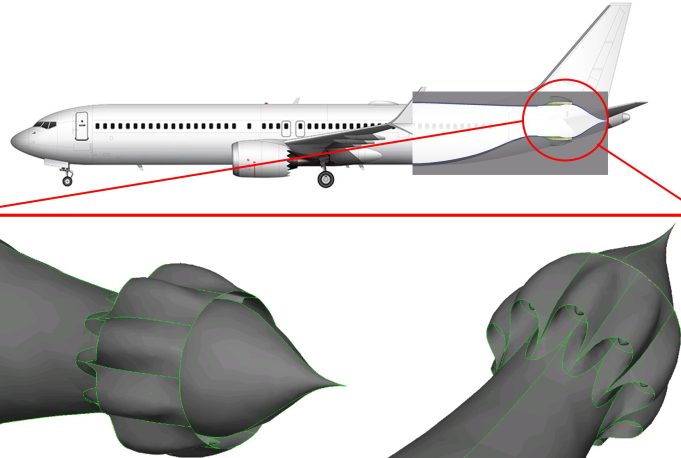
Tail-integrated boundary layer ingesting propulsion systems for turbo-electric aircraft
Members of the Gas Turbine Laboratory present conceptual design guidelines and results for a tail-integrated propulsion system for a turbo-electric civil transport aircraft with boundary layer ingestion.
Lead author: Zhibo Chen,
Co-authors: Marshall C. Galbraith, Zoltán S. Spakovszky, Edward M. Greitzer, Jayant S. Sabnis
Citation: Journal of Turbomachinery, November 8, 2023
Abstract:
This article presents conceptual design guidelines and results for a tail-integrated propulsion system for a turbo-electric civil transport aircraft with boundary layer ingestion (BLI). The aerodynamic performance goal is separation-free and shock-free operation at cruise with fuel burn reduction, compared with a baseline conventional aircraft for the same mission. The assessment of BLI benefits is based on calculations using CFD and TASOPT software, both to characterize the design challenges and to establish the physical mechanisms for resolving these challenges. The guidelines include a “horseshoe” inlet to accept the non-uniform flow without incurring separation, a nacelle profile similar to supercritical airfoils to reduce shock strength, and an annular nozzle to eliminate flow separation between tail-BLI propulsors. The conceptual design has nine BLI propulsors with electric fans on an axisymmetric tail of a single-aisle aircraft. The fans are powered by twin underwing turbofans. The estimated benefit of the tail-BLI, twin underwing turbofan aircraft is 10.4% in Payload-Range Fuel Consumption (PRFC) at a cruise Mach number of 0.8, compared to a baseline twin underwing turbofan configuration. Sensitivity studies further show that a 1% increase in installed (i.e., with BLI) fan isentropic efficiency translates to 0.8% rise in PRFC benefit.

